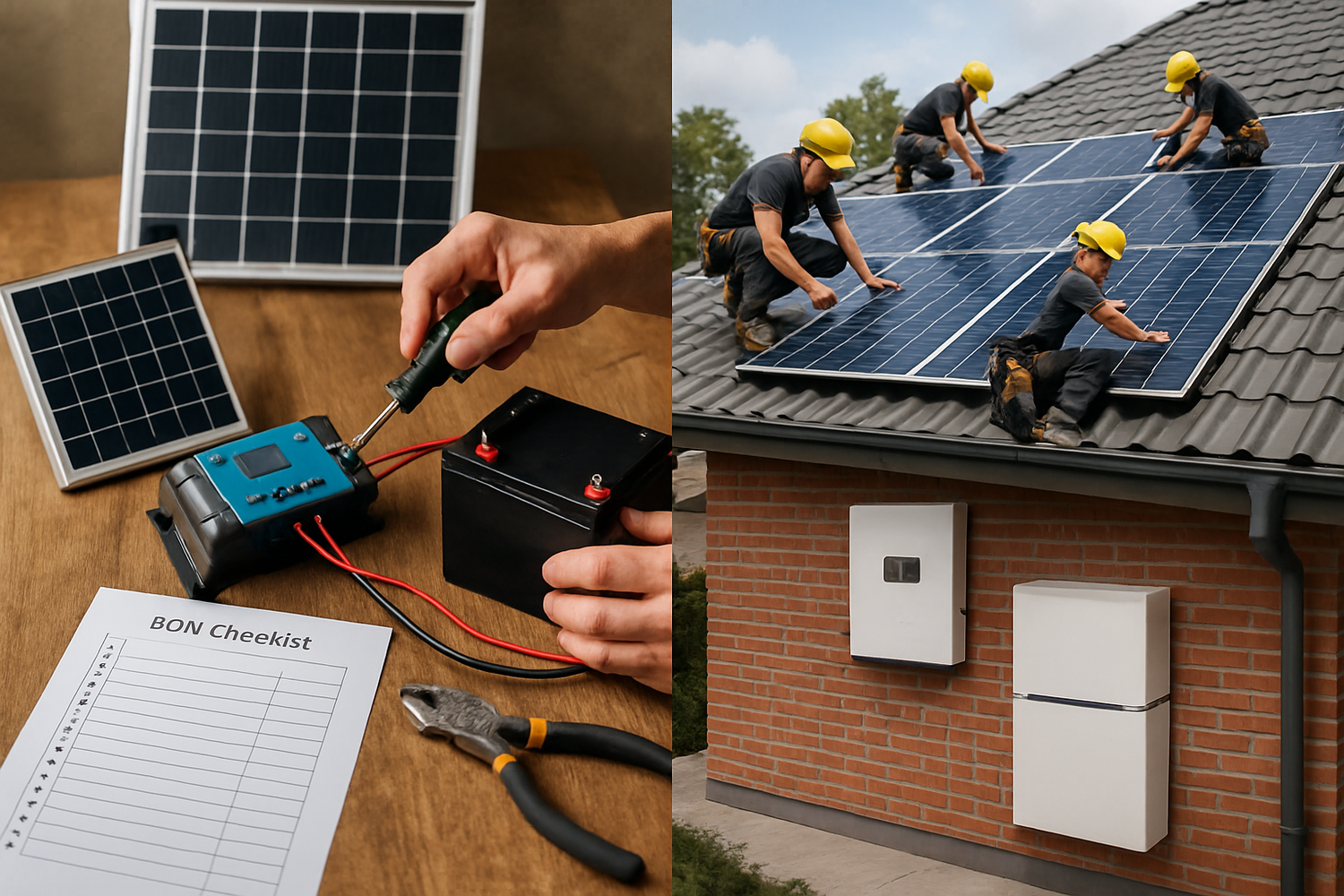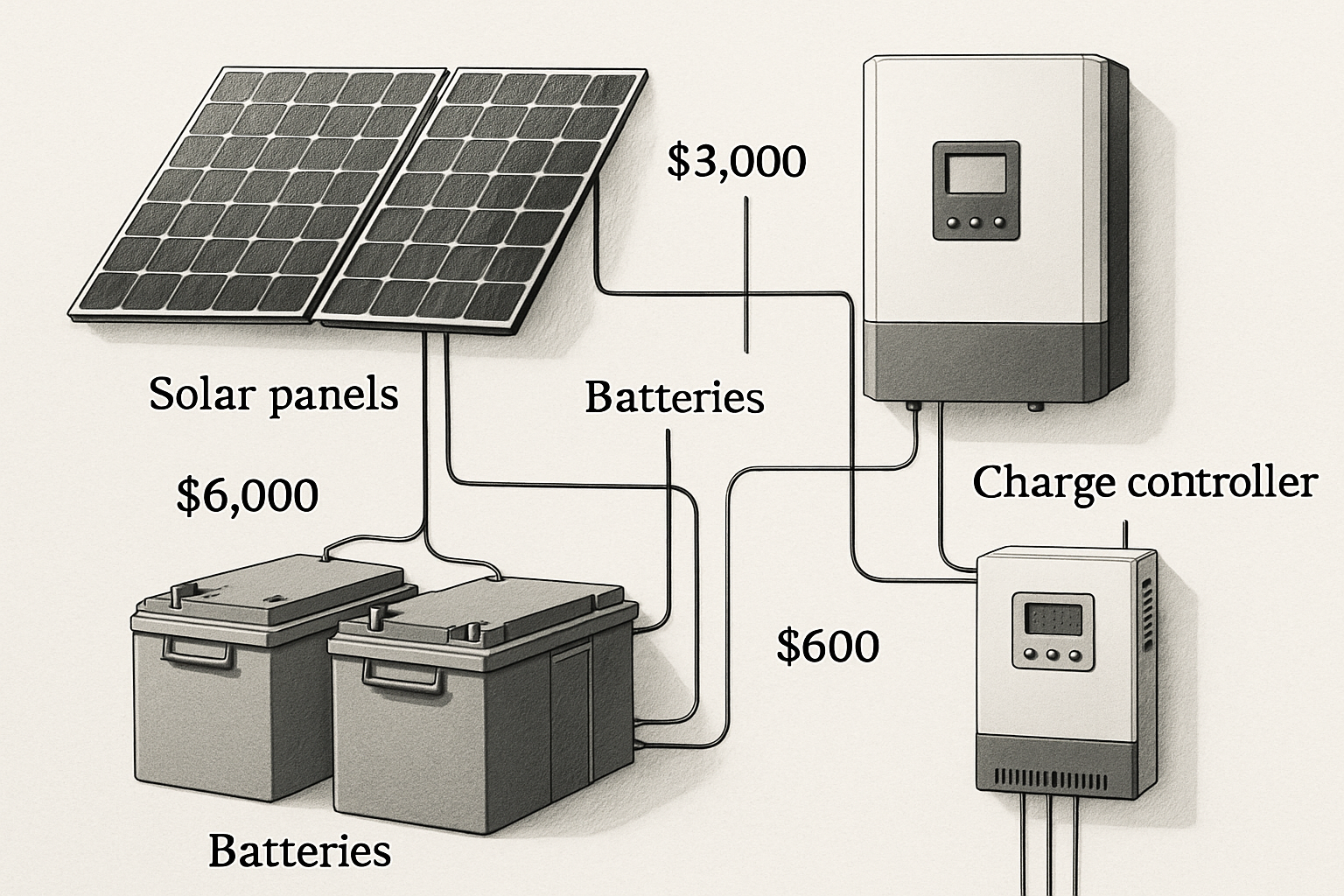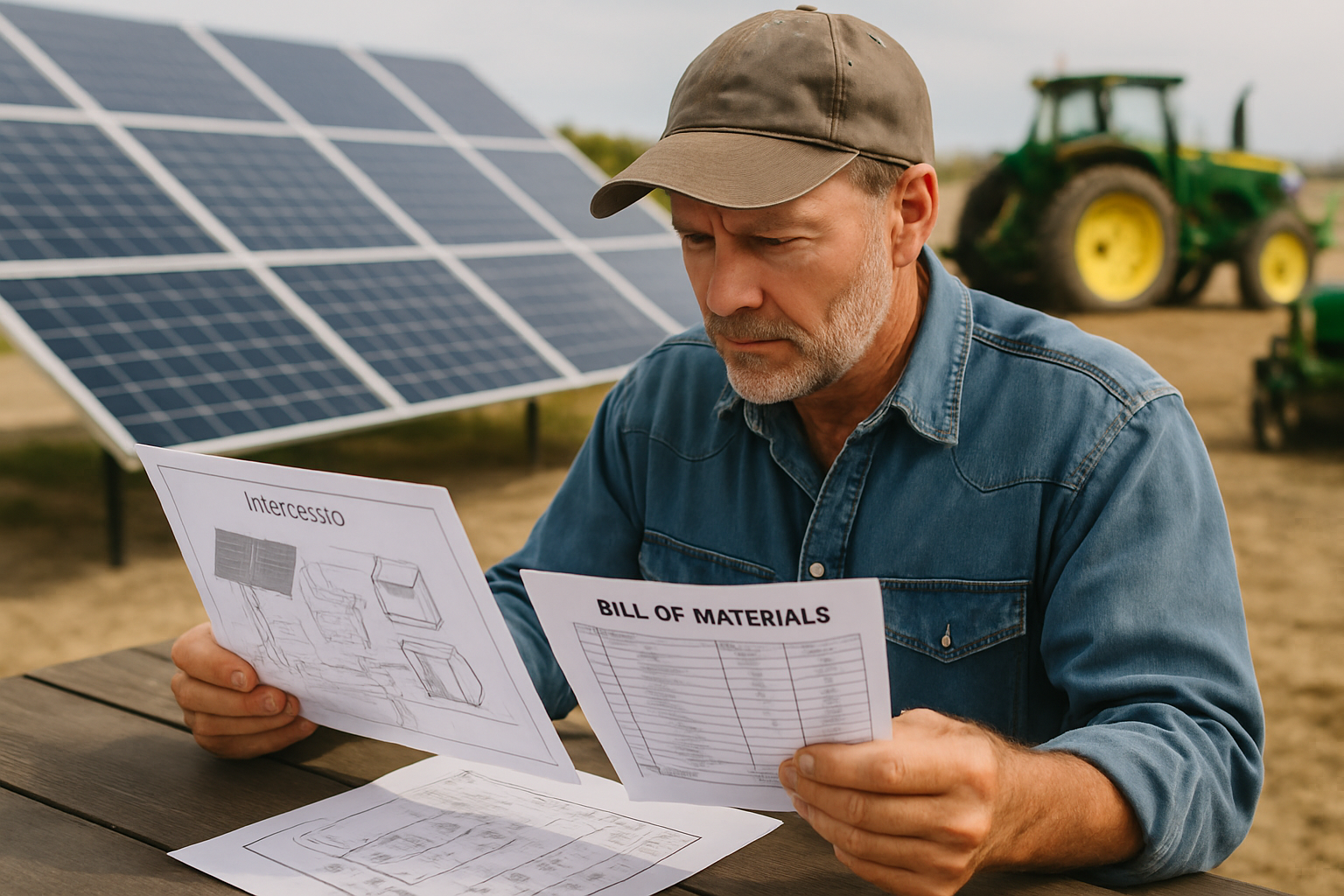Embarking on a solar and energy storage journey promises greater energy independence and significant savings. Yet, a crucial decision often arises early in the process: should you build your system yourself (DIY) or opt for a professionally installed, all-inclusive (Turnkey) solution? This choice profoundly impacts your initial outlay, long-term costs, and overall experience. Understanding the nuances of DIY vs Turnkey cost models is essential for making an informed decision that aligns with your skills, budget, and energy goals.
In this comprehensive guide, we will break down the financial and practical aspects of both approaches. You will gain clarity on what each model entails, discover the hidden costs often overlooked, and learn how to evaluate which path offers the best value for your specific needs. Our aim is to provide you with the insights needed to confidently choose the right energy solution, whether it involves our high-performance LiFePO4 batteries, integrated home energy storage systems, or robust off-grid solar solutions.
Understanding DIY Cost Models: Building Your Own Energy Future
The allure of a DIY solar and energy storage system often stems from the promise of significant cost savings and the satisfaction of building something with your own hands. However, a true understanding of DIY economics extends beyond just the price tags of individual components. It requires a meticulous examination of every element, from raw materials to the value of your time.
The Bill of Materials (BOM): The Foundation of DIY Costs
At the heart of any DIY project is the Bill of Materials (BOM). This detailed list outlines every single component required for your system. For a solar and energy storage setup, your BOM typically includes:
- Solar Panels: The primary energy collectors.
- Energy Storage Batteries: Such as ANERN's reliable and scalable LiFePO4 batteries, which are crucial for storing excess solar energy.
- Solar Inverter: A vital component like ANERN's solar inverters, converting DC power from panels and batteries into usable AC electricity for your home.
- Mounting Hardware: Racking systems for panels, battery enclosures.
- Cabling and Wiring: All necessary electrical connections.
- Charge Controller: Manages power flow from panels to batteries (often integrated into hybrid inverters).
- Safety Equipment: Fuses, circuit breakers, disconnects.
- Monitoring Systems: To track performance.
Careful planning and sourcing for each item on your BOM directly influence your overall DIY cost. We've found that a thorough BOM preparation is paramount for owner-built systems. Ultimate Guide to BOM Pricing for Owner-Built Off-Grid ESS offers more detailed insights into this process.
Beyond the Price Tag: Hidden Costs and Time Investment
While the BOM provides a clear picture of material costs, DIY projects often harbor hidden expenses and time commitments that can quickly inflate your budget. From my experience, these are frequently underestimated:
- Design and Engineering: Developing a safe, efficient, and code-compliant system requires specific knowledge. Errors here can be costly.
- Permitting and Inspections: Navigating local regulations, obtaining permits, and scheduling inspections can be time-consuming and sometimes require professional drawings.
- Tools and Equipment: Specialized tools for electrical work, panel mounting, and battery installation might be necessary.
- Shipping and Handling: Large, heavy components like solar panels and batteries incur significant transport costs.
- Learning Curve: Acquiring the skills for safe and effective installation takes time and effort. Mistakes can lead to damaged equipment or safety hazards.
- Opportunity Cost of Time: Your time has value. The hours spent researching, sourcing, installing, and troubleshooting are a real cost, even if not monetary.
- Unexpected Issues: From damaged components during shipping to unforeseen site challenges, unexpected problems can add to both cost and delay.
Ignoring these factors can lead to a DIY project costing more than initially anticipated. For a deeper look into these often-overlooked expenses, consider reading DIY vs Turnkey Solar: 9 Hidden Costs and Risk Traps.

Understanding Turnkey Cost Models: The Convenience of a Complete Solution
A turnkey solution offers a stark contrast to the DIY approach. It provides a complete, ready-to-use system, managed from start to finish by a single provider. This model prioritizes convenience, expertise, and peace of mind, consolidating many of the disparate costs and efforts of DIY into one package.
Comprehensive Packages and Services
When you opt for a turnkey solar and energy storage system, you are purchasing more than just equipment. You are investing in a full suite of services that typically includes:
- System Design: Professional engineers design a system optimized for your specific energy needs and property characteristics.
- Equipment Procurement: The provider sources all necessary components, often leveraging bulk purchasing power for better pricing and ensuring compatibility. This includes high-quality components like ANERN's home energy storage systems, which integrate batteries, inverters, and solar panels seamlessly.
- Permitting and Approvals: The installer handles all paperwork, permits, and coordination with local authorities.
- Professional Installation: Certified technicians install the entire system, ensuring safety, efficiency, and adherence to codes.
- System Commissioning: The system is tested and brought online, often with a demonstration of its operation.
- Warranty and Support: Comprehensive warranties typically cover both the equipment and the installation workmanship, backed by ongoing customer support.
This all-encompassing approach removes much of the burden from your shoulders, making the transition to solar energy smoother. For those considering pre-engineered solutions, Payback Showdown: Pre-Engineered ESS vs DIY from Scratch offers a useful comparison.
The Value of Expertise and Convenience
The primary value proposition of a turnkey solution lies in the expertise and convenience it offers. While the upfront cost might appear higher than a raw BOM for a DIY project, it often includes:
- Guaranteed Performance: Professional installers often provide performance guarantees, ensuring your system meets expected output levels.
- Code Compliance: Systems are installed to meet all local electrical and building codes, avoiding potential legal or safety issues.
- Safety: Working with high-voltage electricity and heavy equipment carries risks. Professionals are trained and equipped to handle these safely.
- Time Savings: You save countless hours on research, sourcing, installation, and troubleshooting.
- Streamlined Process: The entire project is managed by a single point of contact, simplifying communication and coordination.
- Long-term Reliability: Proper installation by experienced technicians minimizes the risk of future failures and maximizes system longevity.
For many homeowners and businesses, the peace of mind and reduced effort associated with a turnkey solution justify the investment. It allows you to enjoy the benefits of solar energy without becoming an expert installer yourself.
Key Factors Influencing Cost: A Deeper Dive
Whether you choose DIY or turnkey, several fundamental factors dictate the overall cost of your solar and energy storage system. Understanding these elements helps you compare both models more effectively.
Equipment Sourcing and Quality
The quality and origin of your components significantly influence both upfront cost and long-term performance. In the DIY model, you are solely responsible for sourcing. This means researching suppliers, comparing prices, and verifying product specifications. While this can lead to lower component costs if done effectively, it also carries risks of acquiring sub-par equipment or dealing with warranty issues directly.
ANERN, with years of experience in the solar industry, focuses on manufacturing reliable and scalable energy solutions. Our LiFePO4 batteries, for instance, are known for their high performance and safety. When considering a DIY approach, sourcing high-quality components is paramount to ensure system longevity and efficiency. For guidance on sourcing, refer to Blueprint: Source LiFePO4, Inverter, PV for Cheaper DIY.
In a turnkey model, the installer handles sourcing. They typically have established relationships with reputable manufacturers, ensuring access to quality components and often at competitive prices due to bulk purchasing. This also simplifies warranty claims, as the installer acts as your intermediary.
Installation Complexity and Labor
Installation is arguably the most labor-intensive part of any solar and storage project. Its complexity varies based on system size, roof type, electrical panel capacity, and local regulations.
- DIY Labor: Your labor is "free" in monetary terms, but it consumes your time and requires specific skills. For complex installations, the learning curve can be steep, and errors can be costly or dangerous.
- Turnkey Labor: Professional installers bring expertise, efficiency, and specialized tools. Their labor costs are factored into the turnkey price, but they also bring certifications, insurance, and a guarantee of proper installation.
The cost difference here is not just about hourly rates; it is about the value of expertise, speed, and risk mitigation. For example, installing an off-grid solar solution for a farm microgrid might be significantly more complex than a small residential setup, impacting labor needs dramatically. Farm Microgrid Economics: DIY BOM vs EPC Turnkey Build explores this further.
Long-term Maintenance and Warranty
A solar and energy storage system is a long-term investment. Considering maintenance and warranties is crucial for assessing total cost of ownership.
- DIY Maintenance: You are responsible for all maintenance, troubleshooting, and repairs. This requires ongoing learning and potentially purchasing replacement parts. Component warranties are typically honored by the manufacturer, but you handle the logistics.
- Turnkey Maintenance: Many turnkey providers offer maintenance plans or at least provide clear pathways for support. Their comprehensive warranties usually cover both equipment and workmanship, offering a single point of contact for any issues. This can significantly reduce stress and unexpected costs over the system's lifespan.
The peace of mind that comes with a professional warranty and support structure can be invaluable. For more on this, review Q&A: Warranty, Failure Rates, and DIY vs Turnkey Risk.
Making the Right Choice: A Cost Comparison and Financial Analysis
Deciding between DIY and turnkey requires more than just comparing initial price tags. A thorough financial analysis, considering both short-term expenses and long-term value, is essential. This involves looking at metrics like Levelized Cost of Energy (LCOE) and Total Cost of Ownership (TCO).
Financial Analysis: LCOE and TCO
To truly compare the economic viability of DIY versus turnkey, you need to look beyond the initial purchase price. The Levelized Cost of Energy (LCOE) and Total Cost of Ownership (TCO) offer a more complete picture.
- Levelized Cost of Energy (LCOE): LCOE represents the average revenue per unit of electricity generated that would be required to recover the costs of building and operating a generating plant over its lifetime. It helps compare different energy technologies on an equal footing. For solar, it factors in initial capital costs, O&M, and system output over its lifespan. How to Compare DIY vs Turnkey Off-Grid Costs with LCOE provides a detailed methodology.
- Total Cost of Ownership (TCO): TCO encompasses all costs associated with a system throughout its entire lifecycle, including initial purchase, installation, maintenance, repairs, and even disposal. For DIY, this includes the value of your time. For turnkey, it includes the premium for professional services. Stop Overpaying: TCO Math for DIY Kits vs Full-Service offers practical calculations.
Here is a simplified comparison of cost categories:
| Cost Category | DIY Model | Turnkey Model |
|---|---|---|
| Equipment (BOM) | Direct purchase, potentially lower unit cost, self-sourcing risk. | Included in package, bulk discounts, professional sourcing. |
| Labor | Your time (unpaid), potential for errors, learning curve. | Professional installation, certified technicians, guaranteed workmanship. |
| Design & Engineering | Self-managed, potential for costly mistakes. | Included, professional expertise, optimized system. |
| Permitting & Compliance | Self-managed, time-consuming, potential for delays. | Handled by installer, ensures code adherence. |
| Hidden Costs (Tools, Shipping, etc.) | Often underestimated, direct responsibility. | Generally absorbed into overall project cost. |
| Warranty & Support | Component-specific, direct manufacturer contact, self-troubleshooting. | Comprehensive system warranty, single point of contact, ongoing support. |
| Financing Options | Often limited to personal loans or cash. | Access to specialized solar financing, leases, or PPAs. |
Risk Assessment
Each model carries distinct risks:
-
DIY Risks:
- Technical Errors: Incorrect wiring, improper sizing, or unsafe installation can lead to system malfunction, reduced efficiency, or even hazards.
- Code Violations: Non-compliance can result in fines, forced system removal, or difficulty selling your property.
- Warranty Issues: Improper installation can void equipment warranties.
- Time Overruns: Projects often take longer than anticipated, leading to delayed energy savings.
-
Turnkey Risks:
- Higher Upfront Cost: The convenience and expertise come at a premium.
- Installer Quality: The quality of service depends heavily on the chosen installer. Due diligence is crucial.
- Less Customization: While systems are tailored, you might have less granular control over specific component choices compared to DIY.
Understanding these risks helps you weigh the potential savings against the potential headaches. For a detailed discussion on risks, refer to DIY vs Turnkey Solar: 9 Hidden Costs and Risk Traps.
When DIY Shines, When Turnkey Excels
Your ideal path depends on your specific circumstances:
-
DIY is often suitable if:
- You possess strong electrical and construction skills.
- You have ample time for research, planning, and installation.
- You enjoy hands-on projects and problem-solving.
- Your system is relatively small or less complex (e.g., a simple off-grid solar solution for a cabin).
- You are comfortable navigating permits and inspections.
-
Turnkey is generally preferred if:
- You prioritize convenience and a hassle-free experience.
- You lack the technical expertise or time for a DIY project.
- You want professional guarantees and comprehensive warranties.
- Your system is large, complex, or grid-tied, requiring intricate design and permitting.
- You prefer financing options that installers often provide.
It is not always true that DIY is cheaper. Myth vs Reality: DIY Solar Is Always Cheaper—Not Quite debunks common misconceptions. Also, consider Question: When Does Turnkey Beat DIY in Off-Grid Solar? for specific scenarios.
Charting Your Path to Energy Independence
The decision between DIY and turnkey for your solar and energy storage system is a significant one, impacting both your wallet and your peace of mind. Both models offer distinct advantages and disadvantages, and the best choice ultimately depends on your individual skills, budget, risk tolerance, and time availability.
A DIY approach can offer substantial cost savings on components and labor, particularly if you possess the technical expertise and time to manage the project yourself. However, it demands meticulous planning, careful sourcing of quality components like ANERN's LiFePO4 batteries and solar inverters, and a readiness to tackle unforeseen challenges. The hidden costs of design, permitting, tools, and your invaluable time must be factored into the true DIY economics.
Conversely, a turnkey solution provides a streamlined, professional experience. While the upfront investment is typically higher, it includes comprehensive services from design and permitting to installation and warranty support. This model offers convenience, guaranteed performance, and the assurance of professional expertise, making it an attractive option for those who prefer a hands-off approach or have complex system requirements.
Ultimately, your goal is to achieve reliable, scalable energy independence. By carefully evaluating the financial implications, technical requirements, and inherent risks of both DIY and turnkey cost models, you can confidently select the path that best suits your vision for a sustainable energy future. We are here to support your journey with high-quality, reliable energy solutions, regardless of the path you choose.
Disclaimer: This article provides general information and is not intended as financial, legal, or professional advice. Always consult with qualified professionals for specific guidance related to your project.
References
- IEA. (2024). *Energy Technology Perspectives 2024*. Retrieved from https://www.iea.org/reports/energy-technology-perspectives-2024
- IEA. (2020). *Projected Costs of Generating Electricity 2020*. Retrieved from https://www.iea.org/reports/projected-costs-of-generating-electricity-2020
- IEA. (2018). *Status of Power System Transformation 2018 - Technical Annexes*. Retrieved from https://www.iea.org/reports/status-of-power-system-transformation-2018-technical-annexes
- IRENA. (2025). *Renewable Power Generation Costs in 2024*. Retrieved from https://www.irena.org/Publications/2025/Jun/Renewable-Power-Generation-Costs-in-2024





Leave a comment
All comments are moderated before being published.
This site is protected by hCaptcha and the hCaptcha Privacy Policy and Terms of Service apply.